Acne Face Map: What Your Breakouts Are Trying To Tell You
Get a complete overview of this Chinese technique that helps you figure out your triggers of acne.

Image: Shutterstock
Acne is a complex skin condition and reflects the processes inside our body.
The idea of the acne face map is rooted in this principle. Acne face mapping is followed in traditional Chinese medicine and is based on the idea that internal factors may trigger pimples acne on a particular spot on your face.
Multiple factors like hormonal changes, diet, stress, and medication may trigger acne. Therefore, if you often get breakouts or cysts on a particular spot, you can refer to the acne face map to understand the reason. While there could be several other reasons behind acne, this can help you understand the root cause of the occasional breakouts. Scroll down and take a look.
In This Article
Acne Face Mapping: A Quick Tour
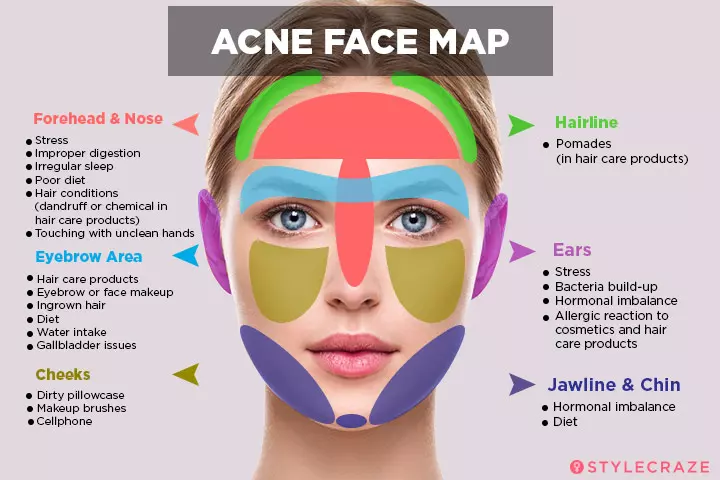
This is an ancient concept practiced widely in Chinese and Ayurvedic medicine. In those days, the scholars used this face map to diagnose various internal issues by observing certain traits on different areas of your face. However, at that time, this was done only by clinical experience. The scholars and doctors in ancient times had no other way to diagnose other than the symptoms or by touching and asking questions.
But now, as medical science has advanced, doctors follow a face map that is based on scientific evidence for proper and thorough diagnosis which can help in identifying the root causes of acne and making personalized treatment plans.
If you have recurring acne on certain parts of your face, here is what it means.
Key Takeaways
- Acne on the T-zone can be due to stress or excess sebum secreted by the skin.
- Stubborn acne on the cheeks could be a result of dirty pillow covers or cellphones touching the skin.
- Hormonal imbalance due to a high-carb or dairy diet could be the cause of breakout on the chin and jawline.
- It is important not to pop the acne as it may lead to further inflammation and cause pigmentation.
Acne Face Map: What’s The Actual Cause Behind Your Acne?
- Acne On Your Forehead And Your Nose (The T-Zone)
- Acne On Your Hairline
- Acne On The Eyebrow Area
- Acne On Your Cheeks
- Acne On Your Jawline And Chin
- Acne On Your Ears
1. Acne On Your Forehead And Your Nose (The T-Zone)

Recurring acne in the T-zone (forehead and nose area) is mainly caused due to excessive sebum or oil production and stress. Although stress and oil production are not related, stress can definitely worsen your acne. A study also confirmed the same (1). This survey on 215 medical students found that about 67% of them had acne that was triggered by stress.
Even in adult females, stress plays a crucial role in aggravating acne (2). How it does so is still unclear.
Acne on your forehead may be due to a number of issues, such as poor diet and pore-clogging chemicals present in hair products.
Hygiene is of utmost importance for managing acne breakouts, so the answer to the often-asked question “Does touching your face cause acne?” is yes, it may. It is best to avoid touching your forehead and face frequently. Unclean hands and fingers spread dirt directly to your skin, which clogs the pores and causes acne (2).
Jes, a beauty blogger, opens up about her acne journey. She writes, “I was covered with acne on my forehead, down the bridge of my nose and JUST one side of my cheek! I was terrified ! I didn’t know how to feel or even what to do (i).”
2. Acne On Your Hairline

Some hair care products contain pomades (a greasy and water-based chemical). Your shampoo, hairspray, hair serum – anything may contain pomade. When you apply pomade on your scalp, it often irritates the skin on your forehead, especially the part close to your hairline. This type of acne is called pomade acne. When you see that you have recurring acne near your hairline, understand that something’s wrong with your hair care product(s).
The best way to avoid it is to stop using that product or change the product immediately. Use shampoos and products that are non-comedogenic (that don’t clog your skin pores).
3. Acne On The Eyebrow Area
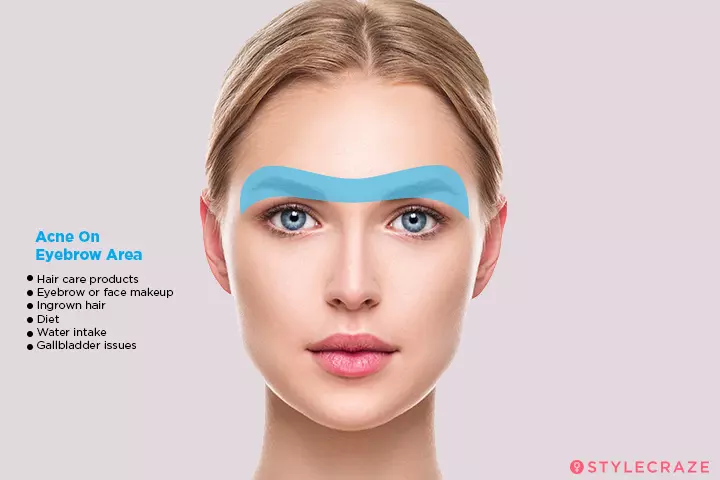
If you have acne on your eyebrows, it is caused by an irritated hair follicle (caused by eyebrow or face makeup or hair care products). If you use brow styling products, make sure they are non-comedogenic, and you clean the applicator frequently. Ingrown hair caused by shaving, threading, and plucking eyebrows can also cause acne.
What you eat reflects on your skin. Although researchers are not clear about how diet affects acne, evidence proves that it does affect your breakouts (3). A diet high in processed foods, alcohol, and fat can be one reason for acne. Improper water intake and issues with your gallbladder can be other factors.
4. Acne On Your Cheeks
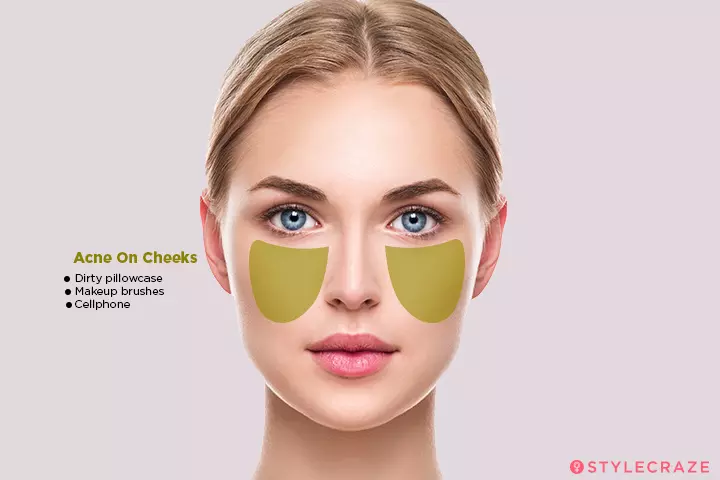
From dirty pillowcases and makeup brushes to your cellphones, and stress, there are a lot of reasons for the recurring acne on your cheeks. While talking, the majority of us hold the phone to our ears, with the screen touching our cheeks. A study found that most mobile phone screen surfaces are contaminated with germs and bacteria. And this is the easiest way for the bacteria to reach your skin (4).
Another study conducted by the London School of Hygiene & Tropical Medicine and Queen Mary, University of London found fecal traces on phone screens (5).
Hence, maintaining basic hygiene is very important.
5. Acne On Your Jawline And Chin
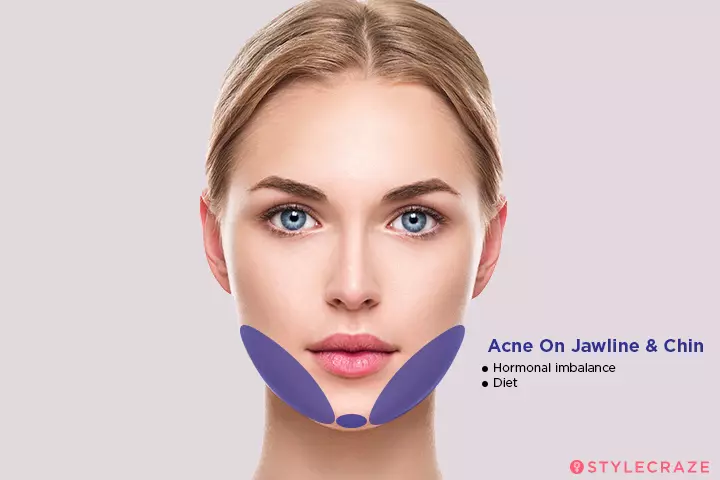
Your hormones mostly regulate chin and jawline acne. A study says that hormonal acne is mainly concentrated in the lower third of the face, i.e., your chin and jawline (6).
In other words, acne on this part of your face is related to your endocrine system that regulates hormone production. According to dermatology, when your body has excess androgeni A male sex hormone responsible for the development and maintenance of male physical characteristics. , your oil glands become overactive. Also, the hormone production is dependent on genetics or may increase during your menstrual cycle and when you are on progestin-onlyi A type of oral contraceptives that does not contain estrogen and may cause hormonal imbalance in some individuals. birth control medication.
Your hormones are also affected by your diet. Research reveals that your hormone levels fluctuate on the basis of your diet. So, if you are following a high-carb diet containing lots of dairy products, your hormone levels will go up (7). Therefore, check your diet if you have frequent jawline and chin acne.
Check your diet if you have frequent breakouts in this particular area.
6. Acne On Your Ears
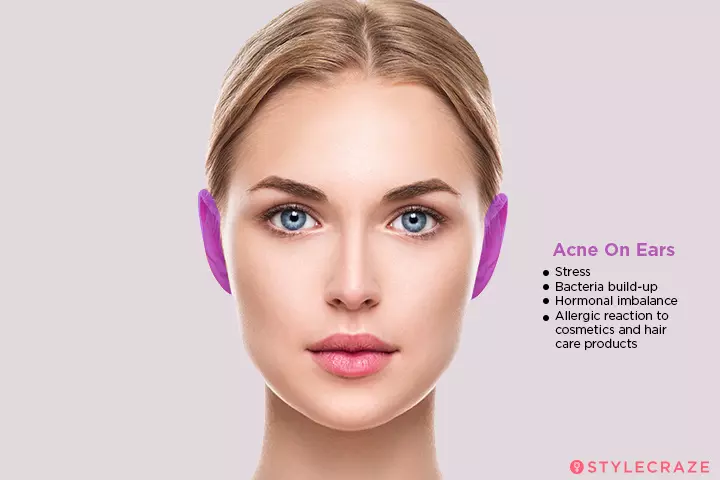
You can get acne on your ears due to certain reasons like:
- Bacteria build-up (due to using unclean headphones or putting your fingers into your ear quite often)
- Stress
- Hormonal imbalance
- Pore-clogging hair care products and cosmetics
Once you identify your acne pattern, you can work on it. Although you can’t do much about hormonal acne, there are ways to reduce the severity of acne.
Treatment Options For Acne
OTC treatment options for acne include topical treatments such as retinol, benzoyl peroxide, or salicylic acid. They help unclog pores and reduce inflammation. Topical treatments work best for mild acne. But how to treat hormonal acne that is severe in most cases? For moderate to severe acne, the doctor may recommend oral medications such as antibiotics (e.g., doxycycline) or hormonal therapy (e.g., birth control pills for females). Other than these, in-office procedures such as chemical peels, laser therapy, or extraction of large cysts may aid in managing persistent acne. The doctor may also prescribe a combination of treatments, like topical ingredients with oral antibiotics, depending on the severity of your breakouts (8).
Apart from these treatment options, you can take additional measures to prevent them. The following section offers some expert tips on preventing acne and helps you learn how to get clear skin.
Tips To Prevent Acne: Things You Should Keep In Mind
Maintain Hygiene
Keep your face clean and avoid touching it often, especially with unclean hands. Also, do not use soap and harsh face washes to wash your face.
 Quick Tip
Quick TipDrink Water And Check Your Diet

Kick the habit of eating a lot of processed foods. Cut down sugar from your diet. Chips, baked goodies, and soft drinks raise your blood sugar levels and affect your breakout patterns. Also, if you find that dairy products trigger your breakouts, cut down on their consumption. Follow an acne diet rich in antioxidants, omega-3 fatty acids, and vitamins A, D, and E. Drink plenty of water. When you are dehydrated, your body produces more oil. Also, when you are dehydrated, your cells cannot function properly. Adequate water in the body can not only keep acne at bay but also improve your complexion and overall skin health.
 Quick Tip
Quick TipCheck Your Makeup And Hair Care Products
Switch to makeup products that are non-comedogenic to cover your blemishes. Avoid using hair care products that contain pomades. Keep track of the products that make your skin break out. Whenever you are choosing skincare products, always pick the ones that are oil-free and non-comedogenic.
Jes, the aforementioned blogger, consulted a dermatologist about the sudden acne breakout she was having. She writes, “I was told my hormones were imbalanced and I should also check my makeup collection to see what new stuff I had used prior to the breakout. So I decided to stop filming and focus on getting my skin back.”
Avoid Touching And Popping Your Acne

I know it’s hard to resist the temptation to pop acne, but avoid doing that. Also, be gentle while removing your blackheads and whiteheads. Improper methods can worsen inflammation and increase the risk of post-inflammatory hyperpigmentation.
Reduce Your Stress Levels
Now that you know stress worsens your acne, take active measures to de-stress yourself. Discover activities that can act as stress busters. Try yoga, meditation, gardening, aromatherapyi The use of fragrant substances like essential oils or incense sticks to provide physical and mental stress relief. , or any other activity that you love.
Remember to consult your dermatologist as well as they can prescribe medication to combat and manage acne breakouts. Jes was prescribed Doxycycline pills and a tretinoin cream that she used religiously. She adds, “The acne had cleared up but I was left with scars and texture on my face but I didn’t stop using the Tretinoin 0.05% cream, i kept using it! Till I saw drastic improvements of my skin.”
Infographic: Common Acne-Causing Ingredients In Hair/Skin Care Products
The use of hair and skin care products containing comedogenic ingredients is one major cause of acne. Such ingredients block skin pores and may also cause skin inflammation. Hence, knowing about these ingredients is key so that you can steer clear of them as much as possible. In the infographic below, we have listed the most common of those. Check it out.
Some thing wrong with infographic shortcode. please verify shortcode syntaxAcne face map is an ancient diagnostic technique used by doctors today to understand the causes behind acne on different parts of your face. Acne on each part of your face is caused by different factors. Acne on your forehead is caused by lack of sleep, stress, and poor diet. On the other hand, if you see acne on your ears or chin, it is probably due to bacterial build-up or hormonal imbalance. Once your doctor identifies the cause behind the acne, you can reduce acne by following the prevention tips mentioned above, such as maintaining a healthy diet, drinking plenty of water, and managing your stress levels to enhance your beauty and confidence.
Frequently Asked Questions
What should I do if my acne doesn’t improve despite following face mapping guidelines?
If your acne doesn’t improve despite following face mapping guidelines, you may consult a dermatologist for a professional opinion and tailored treatment plan.
Can face mapping help with other skin conditions?
Face mapping is mainly used for acne, but it may offer insights into other skin conditions, like breakouts or irritation. However, it might not always provide a definitive diagnosis. So, it is best to consult a dermatologist for more accurate evaluation and treatment.
How do I know if my acne is hormonal or bacterial?
Acne breakouts occurring on your chin, jawline, and ears are mostly linked to hormonal imbalances. Those caused due to bacterial infection can occur on your cheeks, nose, and ears.
How can I balance my hormonal acne?
You can prevent hormonal imbalance acne by over-the-counter treatments like cleansers, retinoidsi A group of vitamin A derivatives used in skin care to boost collagen and increase skin cell production for clearer skin. , maintaining a healthy diet, and consuming anti-androgeni A male sex hormone responsible for the development and maintenance of male physical characteristics. drugs. Visit your doctor before starting any of these.
Are there any limitations or drawbacks to relying solely on an acne face map for acne treatment?
Since there is limited research regarding acne face maps, it is advisable to consult a dermatologist for acne treatment.
Can an acne face map help track progress or changes in acne over time?
No, an acne face map may only provide you with basic information and the underlying reason behind breakout in a specific area.
Illustration: Acne Face Map: What Your Breakouts Are Trying To Tell You
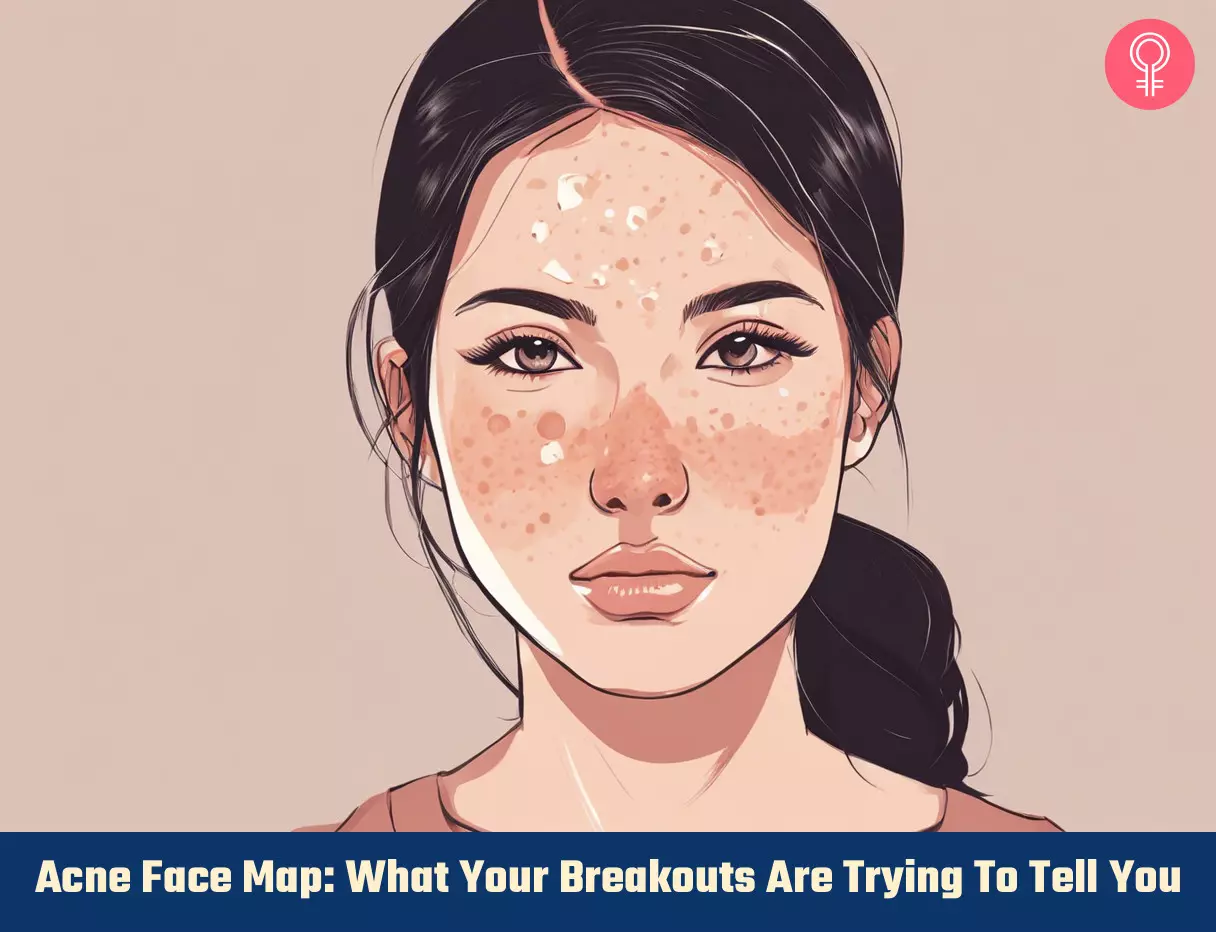
Image: Stable Diffusion/StyleCraze Design Team
Discover how acne face maps and charts really work. Learn the science behind this age-old practice and how it can help you. in the video given below. Watch the video to know more!
Personal Experience: Source
StyleCraze's articles are interwoven with authentic personal narratives that provide depth and resonance to our content. Below are the sources of the personal accounts referenced in this article.
i. MY ACNE STORYhttps://jesiscah.wordpress.com/2017/11/22/my-acne-story/
References
Articles on StyleCraze are backed by verified information from peer-reviewed and academic research papers, reputed organizations, research institutions, and medical associations to ensure accuracy and relevance. Read our editorial policy to learn more.
- “Study of Psychological Stress..”, Advances in Dermatology and Venerology
- “Emerging Issues in Adult Female Acne”, The Journal of Clinical and Aesthetic Dermatology, US National Library of Medicine
- “The relationship of diet and acne”, Dermato Endocrinology, US National Library of Medicine
- “High level bacterial contamination..”, Germs, US National Library of Medicine
- “Contamination of UK mobile phones..”, London School of Hygiene & Tropical Medicine
- “Hormonal treatment of acne vulgaris: an update”, Clinical, Cosmetic and Investigational Dermatology, US National Library of Medicine
- “Diet and Dermatology..”, The Journal of Clinical and Aesthetic Dermatology, US National Library of Medicine
- “Management of acne”, Canadian Medical Association Journal, US National Library of Medicine
- “Dietary intervention in acn”, Dermato-Endocrinology, US National Library of Medicine
Read full bio of Dr. Aanand Geria
Read full bio of Ramona Sinha
Read full bio of Eshna Das
Read full bio of Shiboli Chakraborti






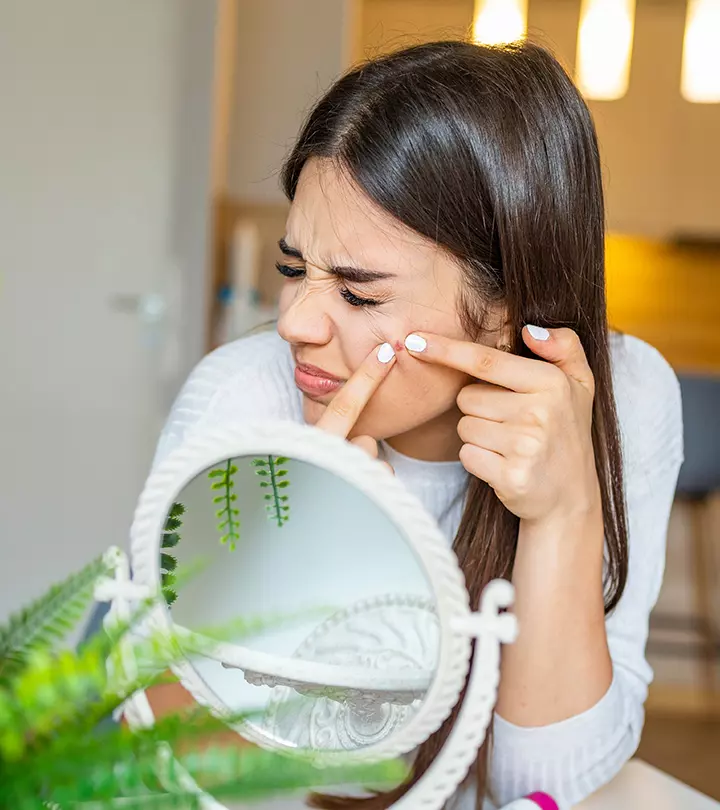





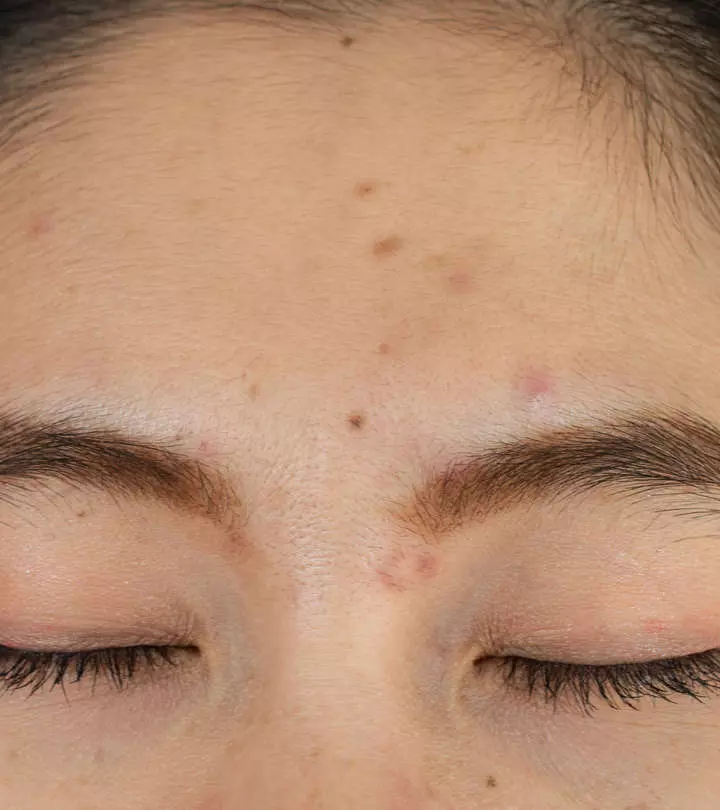



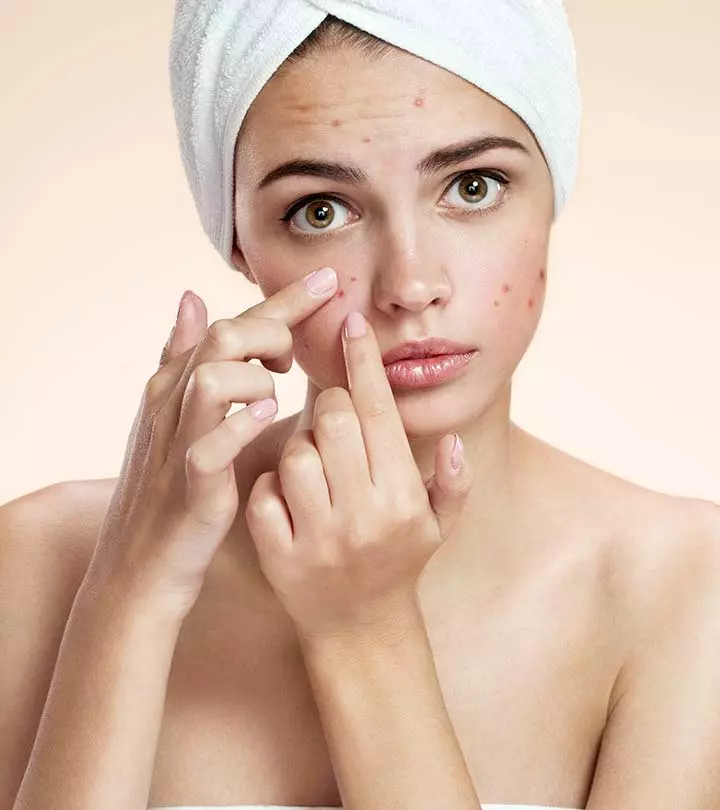
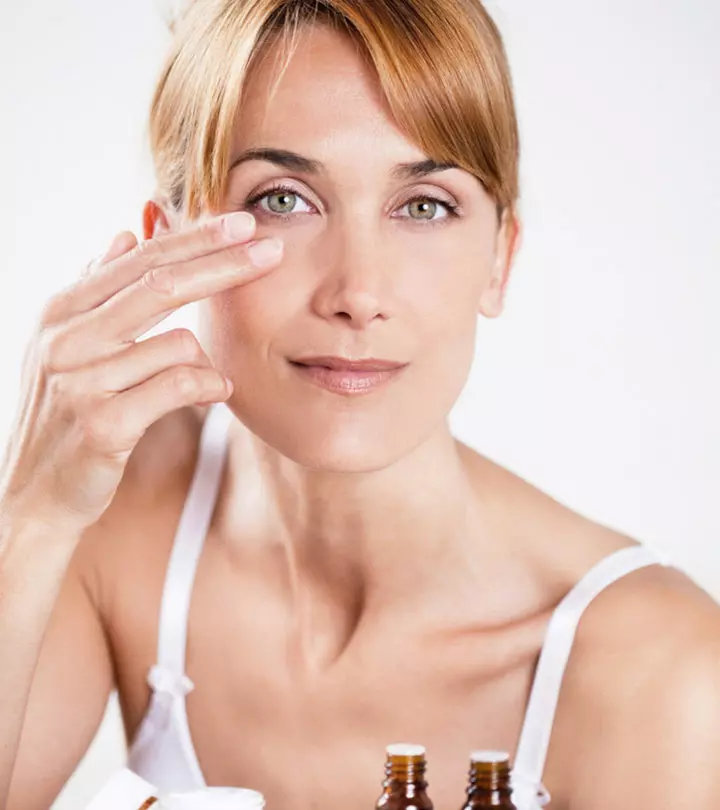


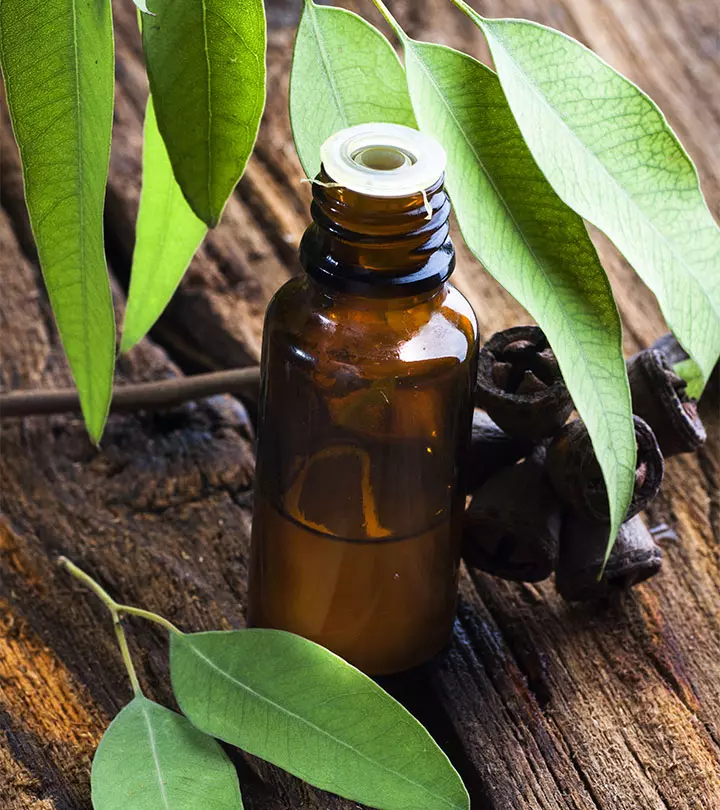
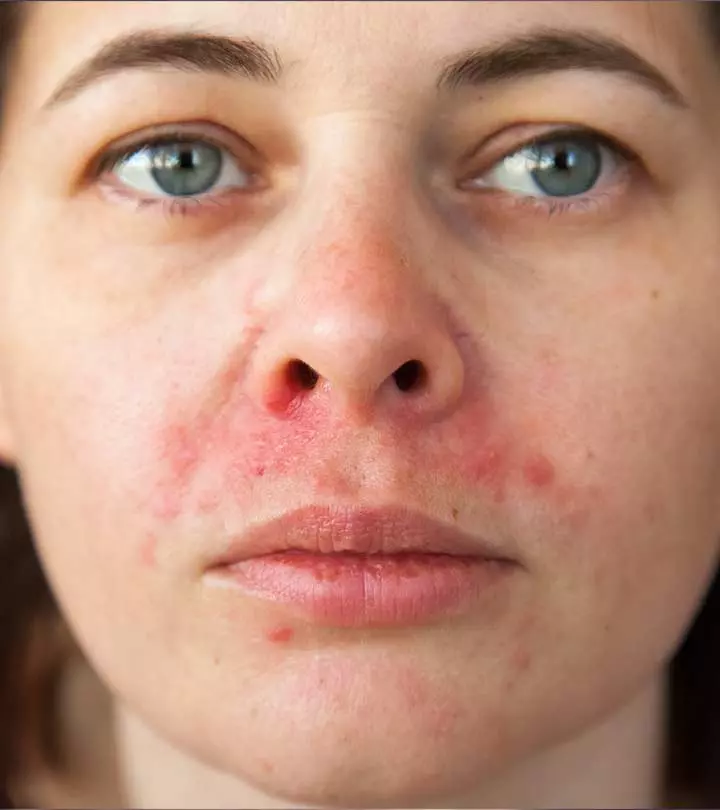
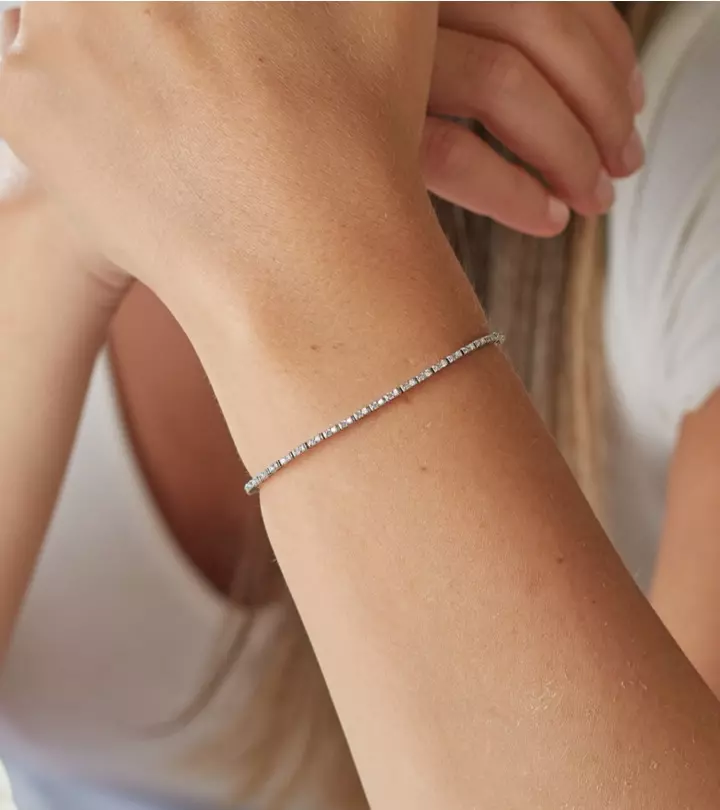
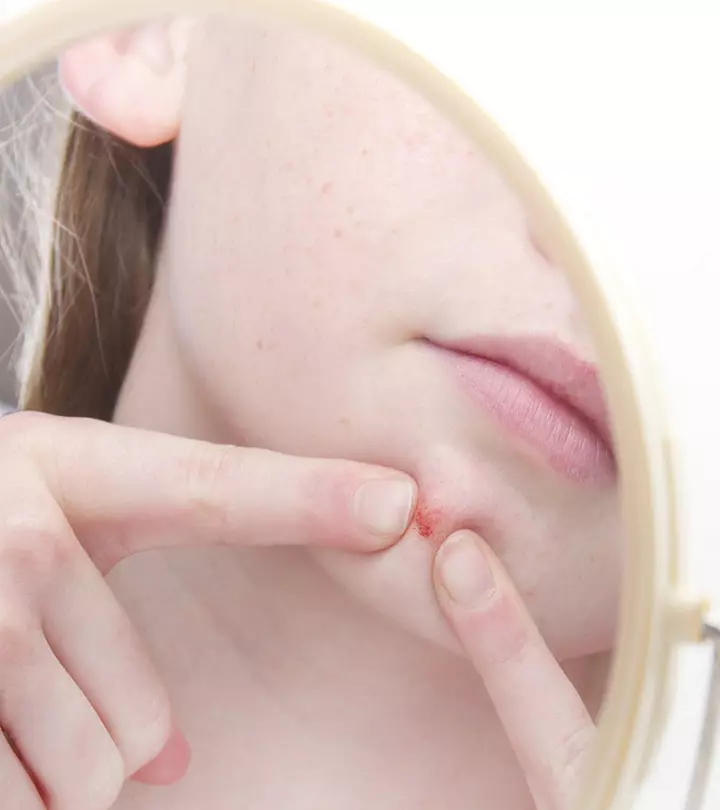
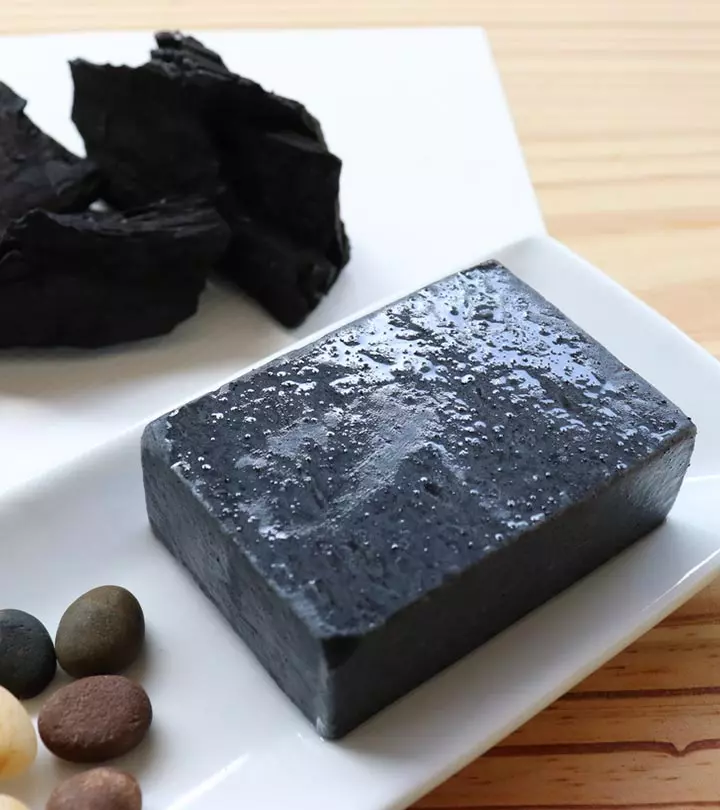
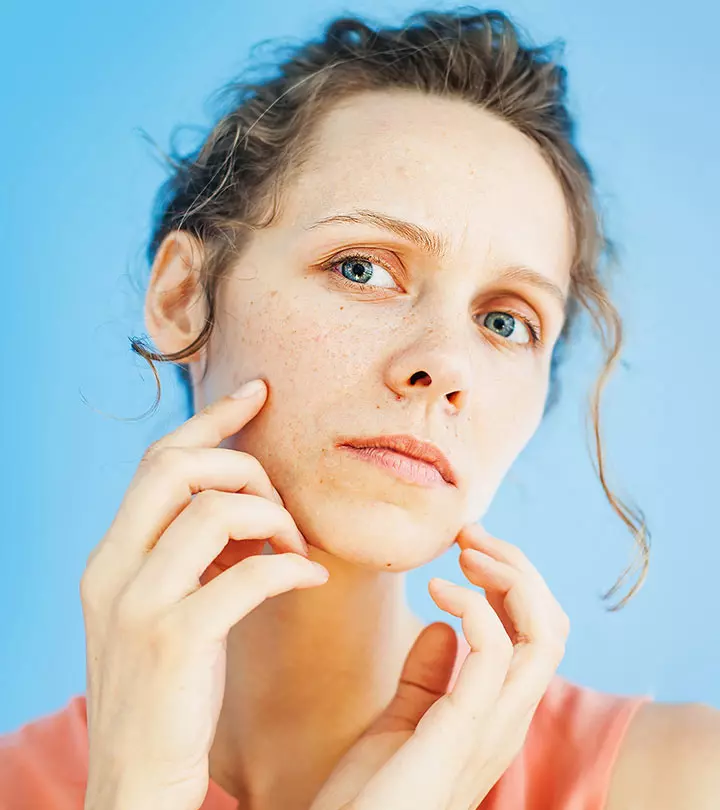
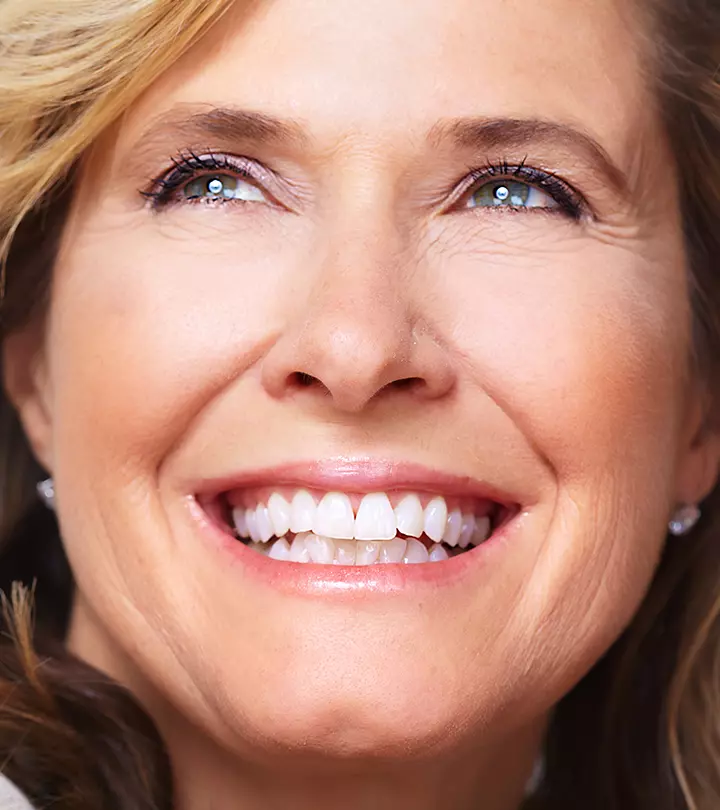
Community Experiences
Join the conversation and become a part of our empowering community! Share your stories, experiences, and insights to connect with other beauty, lifestyle, and health enthusiasts.